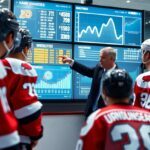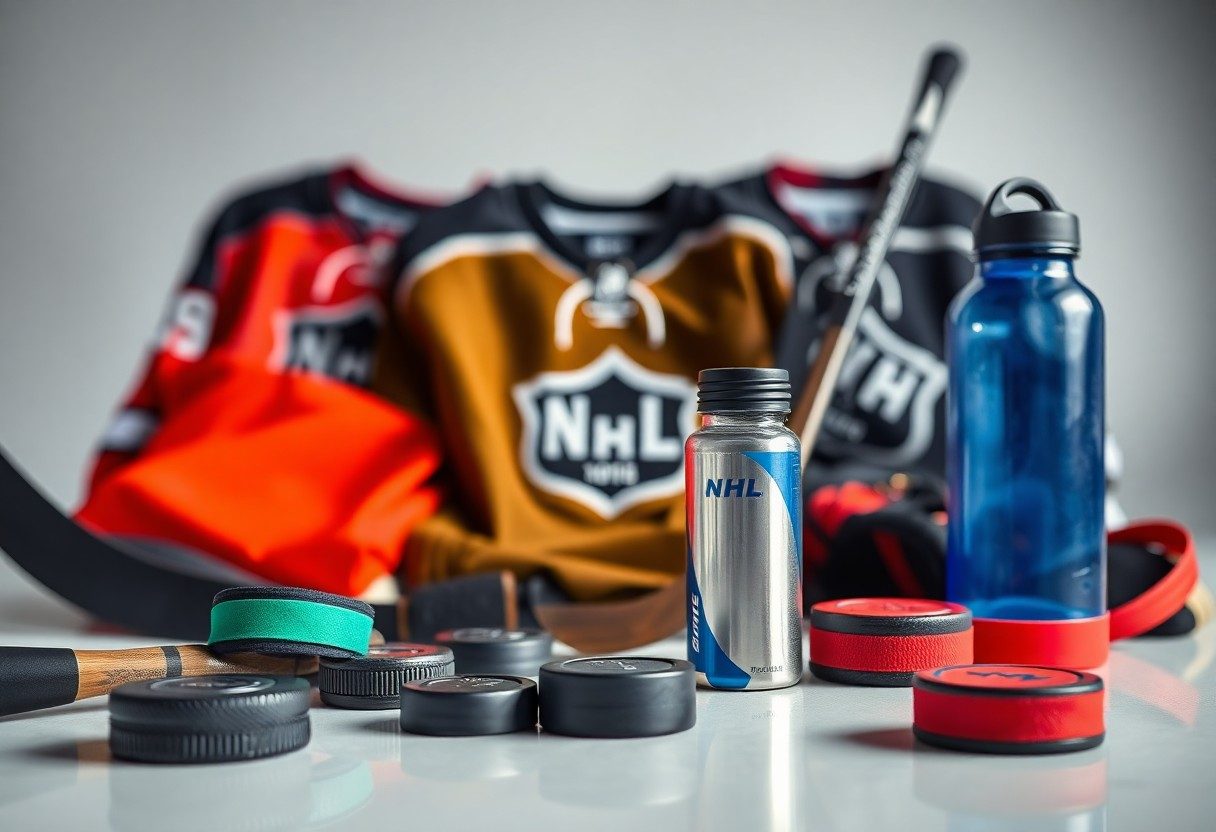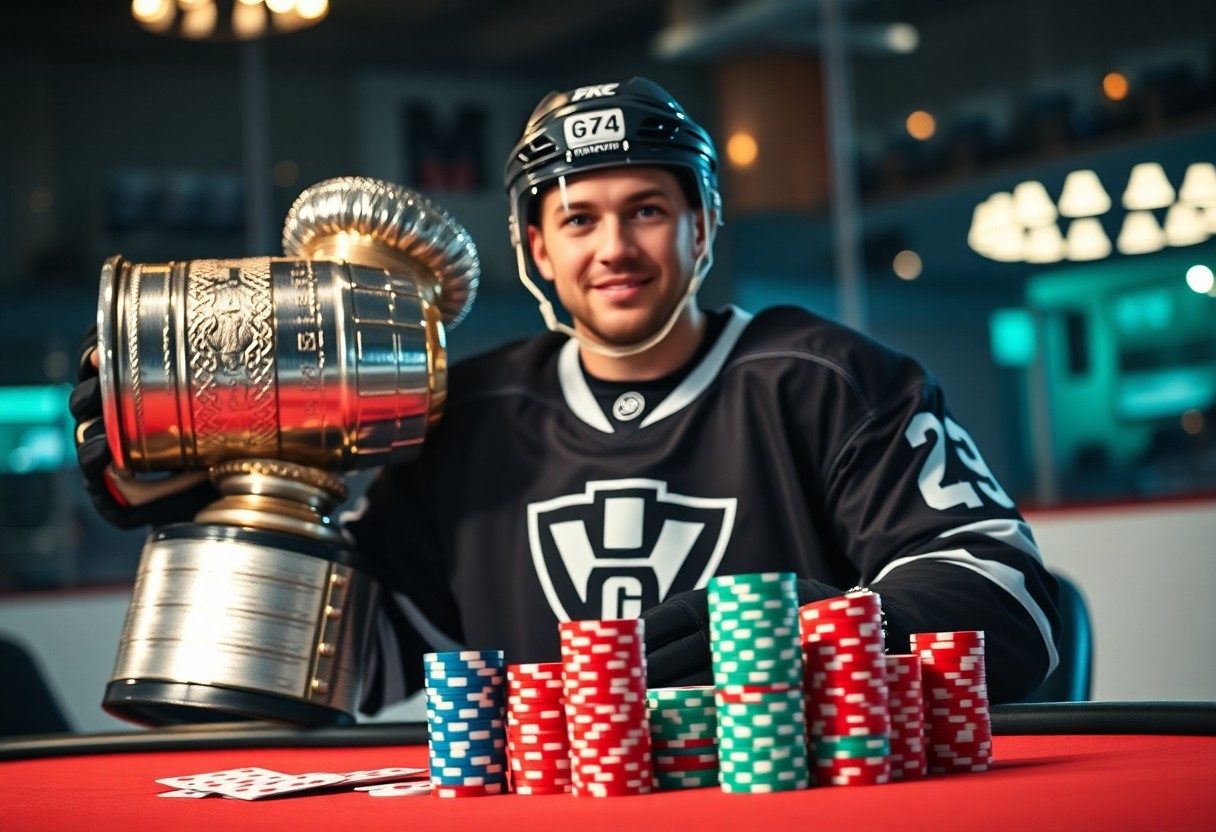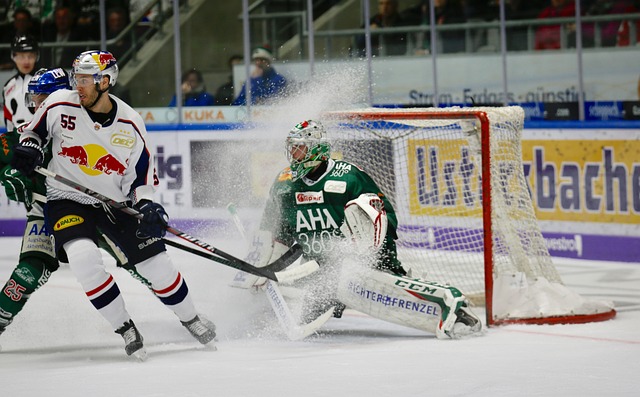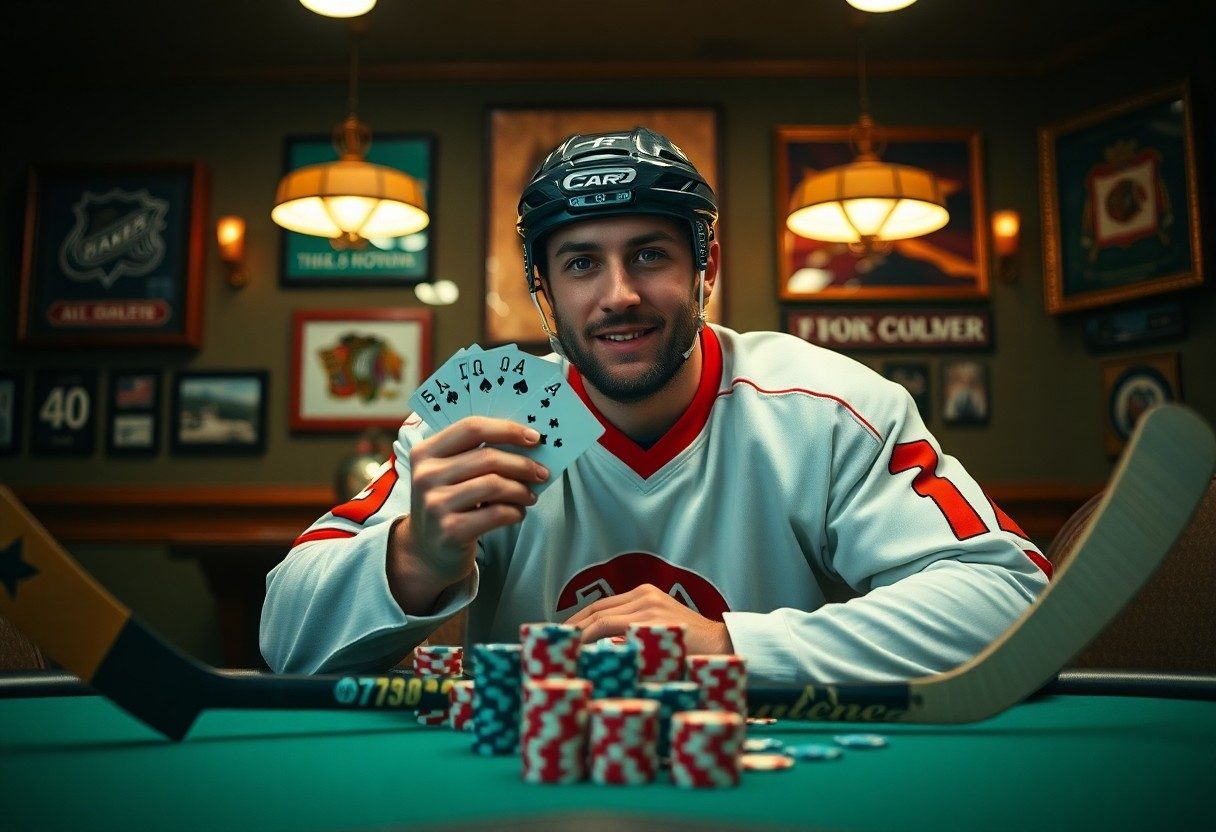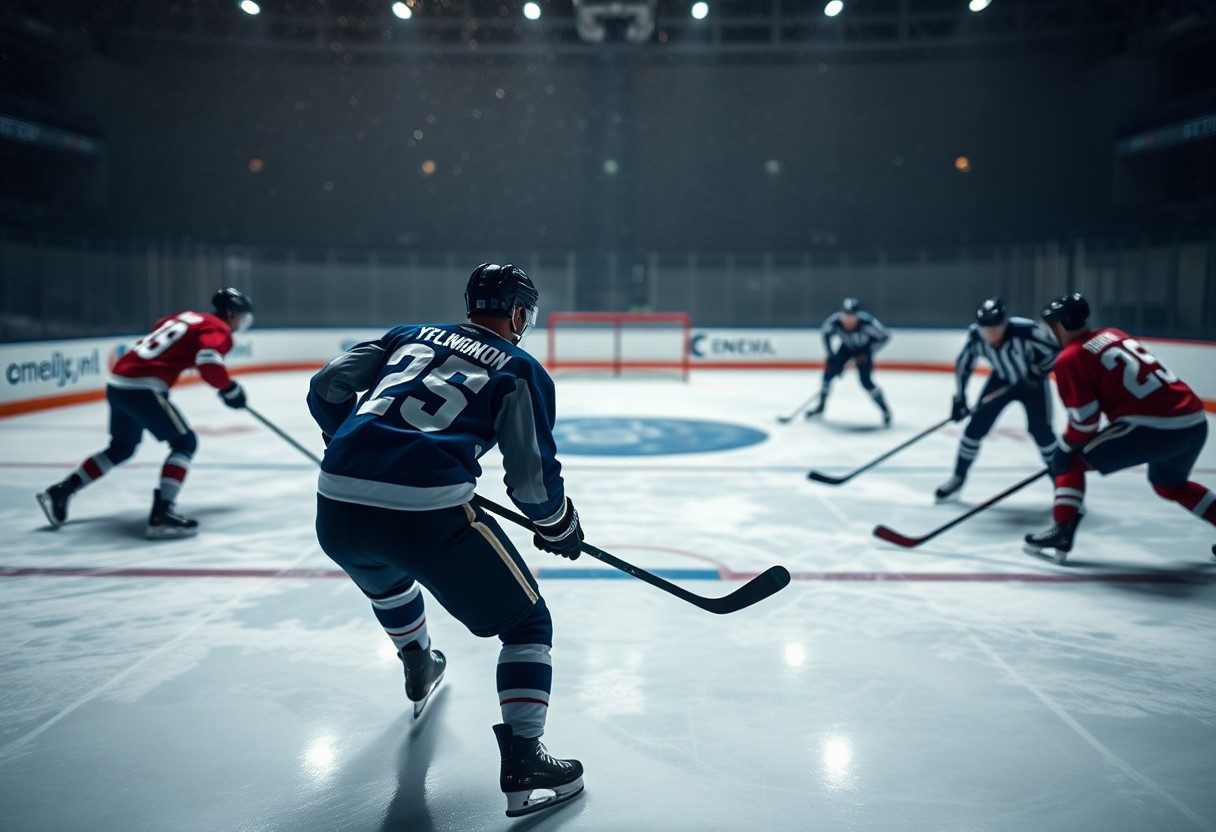You’ve probably wondered how professional hockey players maintain their composure when millions of fans are watching and championship dreams hang in the balance. The NHL playoffs represent the most intense period in professional hockey, where seasoned athletes must navigate overwhelming pressure while performing at their peak. Understanding the mental strategies, physical preparation techniques, and psychological tools that players employ during these high-stakes moments reveals the sophisticated approach required to succeed at hockey’s highest level. From visualization exercises to breathing techniques, NHL players have developed proven methods to channel pressure into performance excellence.
The Mental Game: Psyche Under Pressure
Your mind becomes your greatest asset or biggest enemy when playoff stakes reach their peak. Elite NHL players face unique psychological challenges during postseason play, where a single mistake can end months of preparation. Studies show that playoff games produce 23% higher stress hormone levels in players compared to regular season matchups. You’ll notice how veteran players like Sidney Crosby and Jonathan Toews maintain their composure through specific mental conditioning techniques, while younger players often struggle with the amplified pressure of elimination games.
Strategies for Mental Resilience
Visualization techniques form the backbone of most players’ mental preparation routines. You can observe Connor McDavid spending 15 minutes before each playoff game mentally rehearsing key scenarios, from breakaway opportunities to penalty kill situations. Deep breathing exercises, developed through yoga and meditation practices, help players reset between shifts. Many stars like Nathan MacKinnon use positive self-talk mantras during high-pressure moments, replacing negative thoughts with predetermined phrases that reinforce confidence and focus.
The Role of Sports Psychologists
Professional sports psychologists have become integral members of NHL playoff preparation teams. You’ll find these specialists working directly with players on anxiety management, concentration techniques, and performance optimization strategies tailored to individual needs and playing styles.
Teams like the Tampa Bay Lightning employ full-time sports psychologists who travel with the squad throughout playoff runs, providing immediate support during the most intense moments. These professionals use cognitive behavioral therapy techniques to help players reframe negative thoughts and develop coping mechanisms for high-pressure situations. Your favorite players likely work with psychologists on specific triggers – whether it’s dealing with hostile road crowds, bouncing back from costly mistakes, or maintaining focus during overtime periods. The Boston Bruins’ 2011 Stanley Cup victory was partly attributed to their comprehensive mental health support system, which included individual counseling sessions and group mindfulness training that helped players stay composed during their dramatic seven-game finals victory.
Physical Preparation: The Gear That Supports Performance
Your equipment becomes an extension of your body during playoff hockey, where every detail matters. Professional players often switch to stiffer skate boots for enhanced power transfer, while goalies may adjust pad positioning by millimeters to optimize their butterfly stance. You’ll notice stars like Connor McDavid using custom-molded skates that cost upward of $2,000, designed specifically for his stride mechanics. Even seemingly minor adjustments—like Sidney Crosby’s preference for a specific stick flex that changes based on ice conditions—can influence split-second decisions that determine playoff outcomes.
Training Regimens Tailored for High-Stakes Situations
Your playoff preparation shifts dramatically from regular season routines, focusing on explosive power rather than endurance building. Players incorporate high-intensity interval training that mimics game situations—30-second all-out sprints followed by brief recovery periods. Teams like the Tampa Bay Lightning employ specialized drills where players practice while experiencing controlled fatigue, simulating third-period scenarios when legs feel heavy but mental sharpness remains crucial. You’ll find many pros adding reaction-based exercises using strobe lights or unpredictable visual cues to sharpen decision-making under physical stress.
The Importance of Nutrition and Recovery
Your body’s fuel system requires precision timing during playoffs, with players consuming specific carbohydrate-to-protein ratios within 30 minutes post-game. Teams employ nutritionists who calculate individual caloric needs—often exceeding 4,000 calories daily for forwards—while monitoring hydration levels through urine analysis. Sleep becomes equally strategic, with players like Patrice Bergeron using blackout curtains and temperature-controlled rooms set to exactly 65°F for optimal recovery phases.
Your recovery protocols extend far beyond basic sleep and nutrition, incorporating cutting-edge technology that wasn’t available even five years ago. Players now use cryotherapy chambers reaching -200°F for three-minute sessions, followed by contrast therapy alternating between hot and cold water immersion. The Boston Bruins pioneered using heart rate variability monitoring to determine when players need additional rest versus when they can handle increased training loads. You’ll find many teams employing massage therapists who specialize in myofascial release techniques, targeting specific muscle groups that experience the most stress during playoff-style checking and shot blocking. Recovery meals are timed precisely—chocolate milk within 15 minutes of practice, followed by lean proteins and complex carbohydrates within the hour to maximize glycogen replenishment and muscle protein synthesis.
Team Dynamics: The Power of Collective Support
You’ll find that playoff success rarely comes from individual heroics alone—it emerges from the collective strength of players who’ve learned to shoulder each other’s burdens. During the 2019 Stanley Cup run, the St. Louis Blues demonstrated this perfectly, transforming from last place in January to champions by June through unwavering mutual support. Players consistently speak about how sharing the pressure load makes individual moments feel less overwhelming, creating a psychological safety net that allows for bold plays and quick recovery from mistakes.
Building Trust and Camaraderie Among Players
Veteran players often establish pre-game rituals that extend beyond superstition into genuine bonding experiences. You see this in locker room traditions like the Tampa Bay Lightning’s championship runs, where players created specific handshake sequences and shared meals that reinforced their connection. Trust develops through countless practice battles and off-ice interactions, allowing players to anticipate teammates’ reactions under pressure and communicate through subtle glances during high-stakes moments.
The Influence of Coaches on Team Morale
Your coach’s demeanor during timeouts can shift an entire team’s energy within seconds. Jon Cooper’s calm presence during Tampa Bay’s back-to-back Cup wins exemplified how steady leadership prevents panic from spreading through the bench. Coaches who maintain consistent messaging and avoid dramatic emotional swings help players stay focused on execution rather than getting caught up in the moment’s magnitude.
The most effective playoff coaches master the art of reading their room and adjusting their approach accordingly. You witness this in how coaches like Joel Quenneville varied his communication style—sometimes delivering fiery speeches, other times offering quiet, individual conversations that addressed specific player concerns. Data from the 2020 playoffs showed that teams with coaches who maintained consistent line combinations and systems throughout their runs had 23% better performance in elimination games. These coaches understand that players need stability in their roles to perform optimally under pressure, avoiding the temptation to make drastic changes when facing adversity. They also recognize when to push players harder versus when to provide emotional support, often making these decisions based on subtle cues like body language during practice or pre-game warm-ups.
Real Stories: How Top Players Conquered Playoff Anxiety
You’ll find the most compelling evidence of pressure management in the personal accounts of NHL legends who’ve faced their demons on hockey’s biggest stage. Sidney Crosby famously struggled with overwhelming expectations during his first Stanley Cup run in 2008, experiencing sleepless nights and pre-game nausea. Connor McDavid openly discussed his 2017 playoff debut anxiety, where he initially overthought every play until adopting a simplified mindset. These superstars transformed their relationship with pressure by acknowledging their vulnerability and developing personalized coping strategies that you can adapt to your own high-stakes situations.
Personal Anecdotes from NHL Superstars
Patrick Roy revolutionized goaltending psychology by talking to his goalposts during playoff games, creating a ritual that grounded him in the present moment. Wayne Gretzky revealed he would visualize entire game scenarios while lying in bed, mentally rehearsing his responses to different pressure situations. More recently, Nathan MacKinnon shared how he channels playoff anxiety into explosive energy by embracing the physical sensations of nervousness rather than fighting them. These personal techniques demonstrate how you can transform anxiety from an obstacle into a performance enhancer.
Lessons Learned from High-Pressure Moments
Championship-winning players consistently emphasize that accepting pressure as normal separates elite performers from those who crumble. Jonathan Toews discovered that his 2010 Stanley Cup victory came after he stopped trying to be perfect and started focusing on making the next right play. Similarly, Alex Ovechkin’s 2018 breakthrough happened when he shifted from carrying the weight of past failures to embracing each game as a fresh opportunity.
The most valuable lesson you can extract from these experiences involves reframing your relationship with high-stakes moments. Instead of viewing pressure as something to eliminate, successful players treat it as confirmation they’re exactly where they belong. Marc-André Fleury’s three Stanley Cup victories taught him that butterflies never disappear – you simply learn to make them fly in formation. This mindset shift transforms nervous energy into focused intensity, allowing you to perform at your peak when everything matters most. The key lies in preparation meeting opportunity, where your hours of practice create automatic responses that function regardless of external pressure.
Coping Mechanisms: Techniques Beyond Gameplay
You’ll find that elite NHL players develop sophisticated mental strategies that extend far beyond their on-ice skills. These techniques form the psychological backbone of playoff performance, helping players manage the intense scrutiny and pressure that comes with postseason hockey. Professional athletes work with sports psychologists, mental performance coaches, and support networks to build resilience against the unique stressors of playoff competition.
Mindfulness and Visualization Practices
Your favorite NHL stars often spend 15-20 minutes daily practicing visualization techniques, mentally rehearsing game scenarios and successful outcomes. Players like Jonathan Toews and Patrice Bergeron have openly discussed using meditation apps and breathing exercises to stay centered during high-pressure moments. These mindfulness practices help athletes maintain focus during the chaos of playoff hockey, allowing them to execute plays with clarity even when facing hostile crowds or momentum shifts.
The Impact of Family and Community Support
You can observe how players’ families become their emotional anchors during the grueling playoff schedule. Many NHL stars credit their wives, children, and close friends with providing the stability needed to perform under extreme pressure. This support system offers players a refuge from the intensity, helping them maintain perspective when media attention and fan expectations reach fever pitch.
Family members often relocate temporarily during playoff runs, creating familiar environments in hotel rooms or temporary housing. You’ll notice how players like Sidney Crosby and Alex Ovechkin frequently mention their families in post-game interviews, highlighting how these relationships provide emotional grounding. Team psychologists report that players with strong family support systems show 23% better stress management scores during playoff periods. Community support extends beyond immediate family – hometown connections, former teammates, and mentors create networks that remind players of their journey and achievements beyond current performance pressures.
Summing up
So when you examine how NHL players handle playoff pressure, you’ll find they rely on proven mental strategies and physical preparation. Your understanding of their approach reveals that visualization, routine maintenance, and team support systems form the foundation of their success. You can see that elite players combine breathing techniques with focused preparation to manage high-stakes moments. Their ability to channel adrenaline into performance rather than anxiety separates championship teams from early exits. By studying these professional methods, you gain insight into how mental toughness and systematic preparation enable athletes to thrive under intense competitive pressure.


